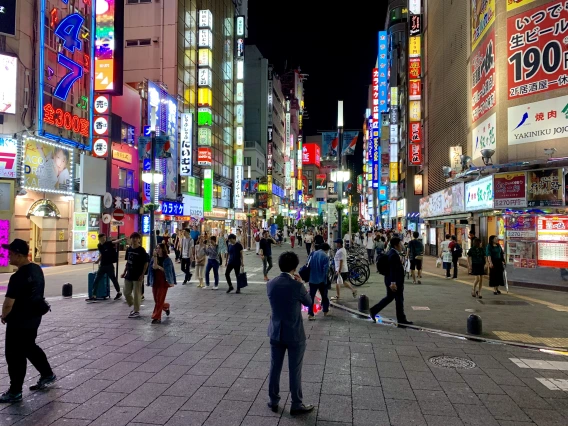
Nathaniel Smith, assistant professor of East Asian Studies, has received competitive grant funding from the Japan Foundation to spend a year in Tokyo researching the transforming Kabukicho neighborhood.
Smith is one of only five U.S. scholars to receive the long-term research fellowship for 2019-2020.
He will be based at Waseda University, where he will research Tokyo’s most infamous postwar red-light district, Kabukicho in Shinjuku Ward. The project will focus on multiculturalism, marginality, and urban renewal in Tokyo as the Japanese capital prepares to host the 2020 Summer Olympics.
“What’s fascinating about this neighborhood is it’s at the crux of so many different constituencies,” Smith says. “It’s long been a place where immigrants can get a foothold, but also a place that was considered dangerous, even to the extent that it’s the setting for the Sega Yakuza video game series. For decades after WWII, Kabukicho was symbolic of how the ‘other half’ lives and what it’s like to struggle in the under-belly of Tokyo. But now, at a moment of changing equilibrium between a future of gentrification and a past of marginality, there are efforts to reflect on Kabukicho’s diverse culture and unique characteristics.”
Kabukicho is a vibrant and diverse neighborhood home to bohemian hangouts, nightlife, new immigrant populations, an active sex industry, organized crime groups, and an array of political activism. Located in Shinjuku Ward, the most diverse district of Tokyo, Kabukicho is in many ways at the heart of Tokyo but it is maligned in others. In the early 2000s, the Tokyo government embarked on an aggressive and controversial “clean up” campaign, installing surveillance cameras and cracking down on a wide range of enterprises.
Smith’s prior research on far-right activism in Japan brought him to Kabukicho often, both as it became a political target as well as a place to relax and drink for activists. During his first visit, as an undergraduate exchange student to Sophia University in Tokyo in the late 1990s, foreign visitors were encouraged to avoid the area altogether. Now, two decades later, with Japan experiencing a boom in tourism, Kabukicho has become the site of large hotels, tourist attractions, and restaurants with menus in English, Chinese and Korean translations.
“Japan is at a turning point demographically but also rapidly opening up to tourist interest from around the world,” Smith says. “Kabukicho has always been seen as a wilder place within the city, but in fact Kabukicho and Shinjuku more generally can serve as an excellent model for other wards in the city and Japan itself for how to integrate different ethnic populations and ways of life into the fabric of society.”
An anthropologist by training, Smith’s research will center on mixed-method ethnographic data collection, including archival research, media analysis, interviews, and long-term participant-observation fieldwork with residents, business owners, policy makers, and visitors to the area. The work will culminate in his second book project, Kabukicho Renaissance: Multiculturalism, Marginality, and Urban Renewal in Tokyo.
“I’m very glad to be able to return to Tokyo at such an important juncture, generously supported by the Japan Foundation,” Smith says. “I look forward to engaging UA students about these issues and others when I return.”

